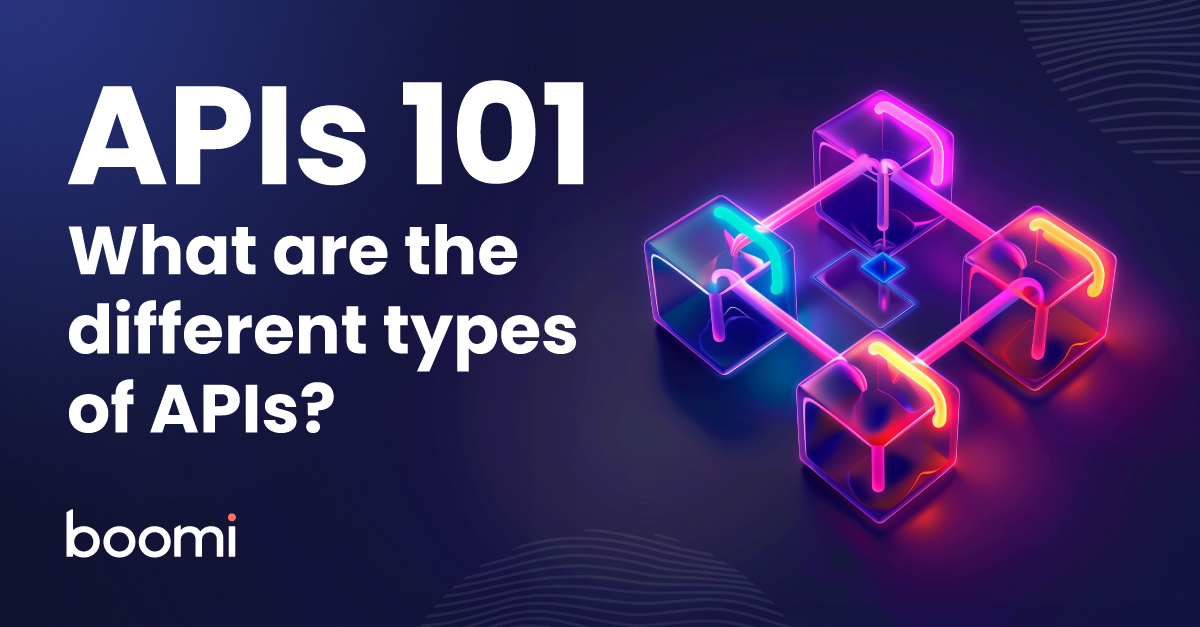APIs (application programming interfaces) are fundamental to today’s online technology ecosystem. Your organization’s web presence cannot exist without them, but the world of APIs is far from monolithic. The challenge for businesses is identifying the correct type of API for their specific requirements and implementing effective API management practices. We will explore the different API integration types and explain how each one functions so you can select the best APIs for your organization.
What Are the Different Types of APIs?
Four main types of APIs exist: public, partner, internal, and composite. In addition, three different types of API protocols determine API operation and data sharing.
1. Public APIs
Public APIs, often called open APIs or external APIs, are intentionally made accessible to the general public, including external developers, without restrictions. They bridge an organization’s internal systems or services and external parties who wish to interact with them. This accessibility promotes collaboration, innovation, and the creation of a broader ecosystem around the organization’s services or data.
2. Partner APIs
Partner APIs are shared externally but exclusively with authorized parties, typically business partners or collaborators. These APIs facilitate controlled data or service access between an organization and its trusted partners, ensuring that sensitive information or functionalities are shared securely and selectively.
3. Internal APIs
Internal APIs are shared exclusively within the confines of an organization. Their purpose is to facilitate communication and data exchange among various internal systems. Unlike public or partner APIs, they are not exposed to external developers or entities. They are designed with the organization’s security policies in mind, often incorporating robust authentication and authorization mechanisms to ensure that only authorized personnel can access and use them.
4. Composite APIs
Composite APIs act as intermediaries or orchestrators, enabling developers to combine multiple APIs into a single, unified API endpoint. These APIs simplify complex operations by aggregating data or functionalities from various sources, providing an efficient way for applications to interact with multiple services or systems.
Types of API Protocols & Architectures
Three types of API protocols and architectures comprise the rules of the API’s operation and how data is shared: REST, SOAP, and RPC. Each type of API protocol has its own uses and best practices.
1. REST
REST (Representational State Transfer) is one of the most widely used API architectures. It’s known for its simplicity and scalability. It operates on the principles of stateless communication and resource-oriented architecture. RESTful APIs rely on standard HTTP methods to interact with resources represented as URLs. They exchange data in various formats, typically JSON or XML, making communication easy for different systems. REST is popular due to its simplicity, ease of implementation, and excellent support for caching and statelessness.
2. SOAP
SOAP (Simple Object Access Protocol) uses XML as its message format and relies on strict rules and protocols. SOAP APIs are known for their robustness, security features, and strict adherence to standards. They provide features like message validation, error handling, and a predefined contract known as Web Services Description Language (WSDL) for defining API operations. SOAP’s advantages lie in its reliability and support for complex transactions, making it suitable for applications requiring high levels of security and reliability, such as financial services and healthcare.
3. RPC
RPC (Remote Procedure Call) is the simplest type of API. This protocol allows one program to execute a procedure or function on a remote server as if it were a local function call. While less widely used, RPC-based APIs are relevant, especially in scenarios requiring low-level system interactions. They are suitable for efficient, low-level communication applications, such as distributed systems and real-time applications where performance is a top priority.
How to Choose the Right Type of API for Your Business
Each type of API offers different advantages and disadvantages. Since not all APIs are equal, your business will want to choose the correct API integration types for your needs and leverage the best API management.
Here’s what you should know to make your choice:
- Public APIs: Use these when you want to make your API openly available to anyone, fostering innovation, expanding your ecosystem, and reaching a broad audience.
- Partner APIs: Choose partner APIs when you must share your API selectively with trusted external collaborators or businesses, ensuring secure and controlled data exchange.
- Internal APIs: Employ internal APIs for seamless communication and data sharing within your organization.
- Composite APIs: Consider composite APIs when combining data or functionalities from multiple APIs into a unified interface or simplifying complex operations.
REST vs SOAP APIs
- REST: Opt for RESTful APIs when simplicity, scalability, and ease of implementation are required.
- SOAP: Choose SOAP APIs for enterprise and security-intensive applications, like the complex transactions in the financial service and healthcare industries.
- RPC: If you require efficient, low-level communication, especially in distributed systems or real-time applications, RPC-based APIs are a solid choice.
In addition to choosing the right APIs, your business needs an easy way to manage them.
Boomi’s API management platform is the ideal solution that reduces the inefficiencies of complex API management. Boomi supports the entire lifecycle of APIs in any environment and enables effortless real-time integration.
Want to combine your API with AI? Download our eBook, “API Management in the Age of AI“

